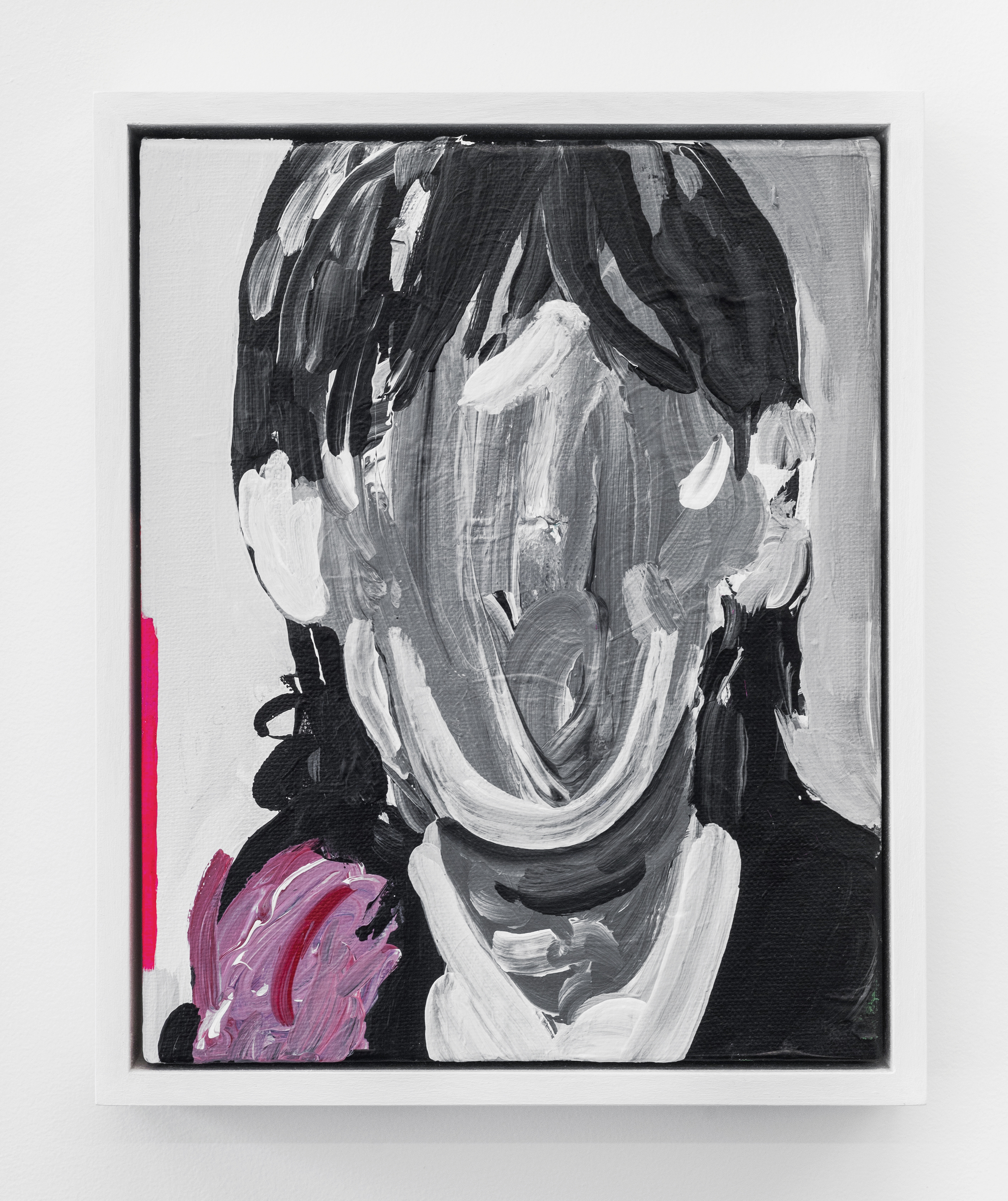Installation view of Animal Laughter, paintings by William Matheson & sculptures by Nick Norman
Young Demon, 2017, oil on canvas, 26 x 44"
Tamer, 2017, oil on canvas, 46 x 48"
Toe, 2017, oil on panel, 10 x 8"
Secret Joke, 2016, oil on panel, 10 x 8"
Night Lemon, 2017, oil on panel, 10 x 8"
John, 2017, oil on panel, 24 x 12"
Golden Crab, 2017, oil on panel, 10 x 8"
After the Orgy, 2017, oil on canvas, 58 x 28"
What goes on after an orgy is not something many of us have, or will ever experience. This mysterious scenario is the setting for William Matheson’s painting, After the Orgy. The long, vertical painting focuses the action at the top third of the canvas with two figures crouch together, hands meeting, perhaps in an act of exchange. Lying nearby are two animals, only halfway visible, a coyote or dog, and a ram, only identifiable by one curved horn. A leg also juts out into the frame with a flaccid penis resting on its thigh. An object, a painting palette rendered in various grey hues hovers directly below this scene. The bottom two thirds of the painting is occupied by a field of yellow, like a bleak and hot desert landscape. Towards the bottom of the frame another leg, this time from the calf down emerges. Both legs serve to remind us that more people, although not completely visible, are involved in this story.
After the Orgy is a work interested in framing, in revealing just enough information for a narrative to begin to unfold without telling the full account. The grey painting palette is an outlier in this narrative. Without it the work tells the story of another place and time, perhaps an ancient one in which animals and humans co-exist in a special way. The fantasy of a post-bacchanalia scene is complicated by the palette, which refers back to the very act of painting and the painter himself.
–Gabi Lewton-Leopold













































